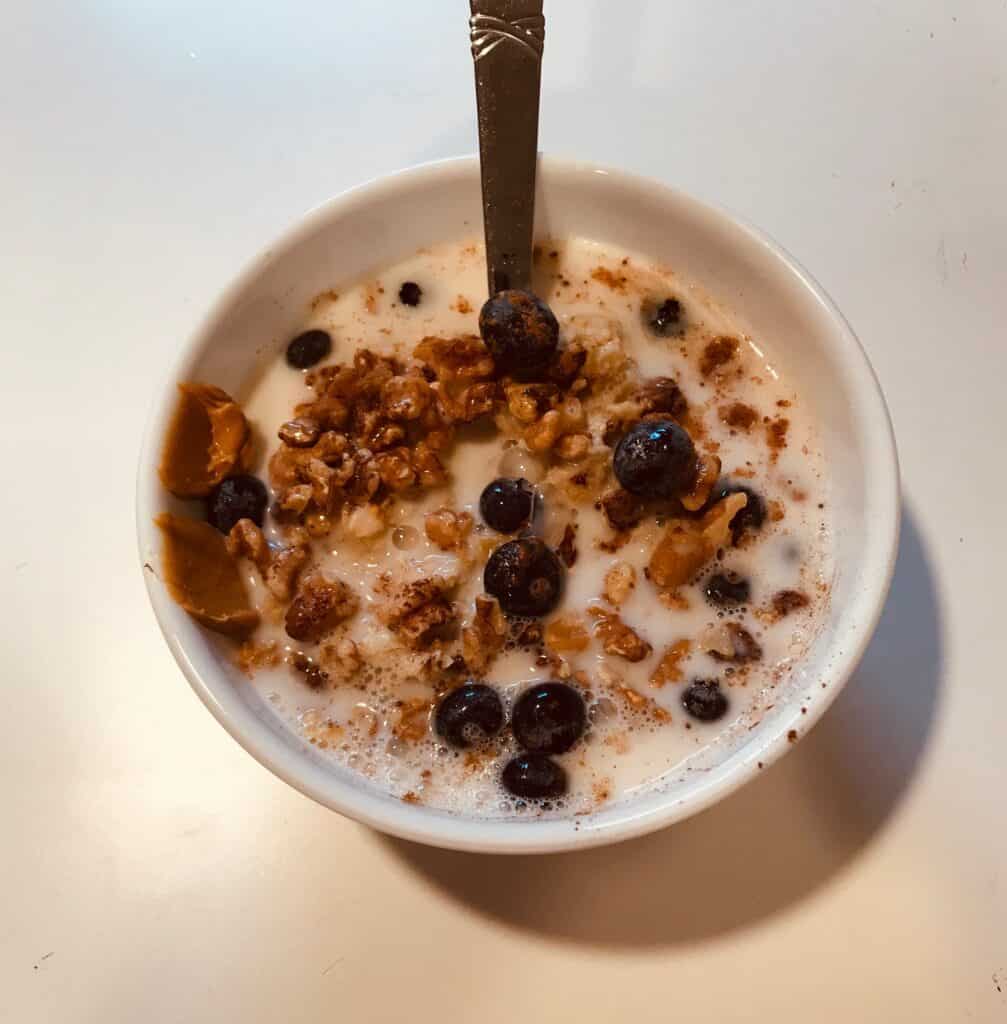Let’s face it, we really are what we eat. We’re all aware of how important it is to properly fuel our body for sustained energy throughout the day. A nutritious breakfast or first meal is critical to this way of thinking. Choosing healthy food options can do wonders for both our mind and body. When used optimally, meaning, food quantity and meal timing, food fuels our brain and muscles like nothing else. No meal is more important, however, than that first meal of the day. This is your first food option in the morning or at noon if you’re into intermittent fasting (IF). How you initially fuel your body after waking, from a fasted state, will set the tone for the rest of the day.
What is Your Eating Style?
You may have been like me in the past where you were focused on consuming food every 3-4 hours. It may have been important to eat healthy and often to build lean muscle and/or maintain blood sugar levels. As the body ages, eating habits may, however, change. Some people have a tendency to change eating habits, spacing their meal frequency further apart. Not eating for longer periods of time (12+ hours) has been shown through research to be a positive change. The body uses a combination of macronutrients to fuel the brain (carbs) and body (carbohydrates, fats and some protein). Not eating for longer periods of time will adjust the ratio of how the body utilizes carbohydrates and fats for fuel. A higher percentage of stored fat (instead of more carbs) typically get used when doing IF.
What Are Macronutrients and Micronutrients?
Macronutrients are large molecules that our bodies need to function optimally. The big three are carbohydrates, fats and protein. Water and fiber are also considered macronutrients. Conversely, micronutrients, like vitamins and minerals, are molecules that we need but in much smaller quantities. Both are very important and all are needed to help your human body function properly.

Nutritious Breakfast Options
Eating eggs or egg whites in the morning may be your thing. Maybe it’s cold cereal or a piece of toast with peanut butter and banana. All, other than the cold cereal, are healthy, nutritious breakfast options. A combination of macronutrients in a breakfast or snack are important to fuel the body for long periods of time. One key macronutrient is fiber. Many breakfast options, like most cold cereals, have minimal or no fiber. Eating fiber helps with gut health, it keeps you feeling satiated while helping to reduce the sugar and fat cravings.
A healthy, nutritious breakfast option to give a try is oatmeal. Where not talking instant oat meal out of a package either. Try the type that you cook on the stove (for 5-minutes). It’s loaded with all the macronutrients including fiber. You can add things like nuts and fruit that will increase total calories but also the amount of fiber and protein. The following is a calorie breakdown of a typical bowl of oatmeal that I typically eat. Following that, are additional add-ons like fruit and nuts.
Calorie Breakdown: Old Fashion Oats
| Food | Calories/Macronutrients |
| 1 Cup Oatmeal | 150 calories/27 grams CHO/4 grams Fiber/5 grams Protein |
| 1 Cup Almond Milk | 40 calories/1.5 grams CHO/3.5 g Fat/1.5 g Protein |
| 1/2 Cup Walnuts | 392 calories/8 grams CHO/39 grams Fat/4 grams Fiber/9 grams of Protein |
| 1/2 Banana | 45 calories/11 grams CHO/1 gram Protein/6 grams natural sugar |
| 1/2 Cup Blueberries | 41 calories/10.5 grams CHO/1.7 grams Fiber/0.54 grams Protein/7 grams natural sugar |
| TOTAL | 668 calories/58 grams CHO/9.7 grams Fiber/17 grams Protein |
There is sugar in this breakfast option, yes, but it’s natural occurring sugar found in fruit, as opposed to added sugar. Most of the fat comes from the walnuts, this can be optional, keep in mind their a healthy source of fat. To add a little more protein, substitute the walnuts with almonds. The big takeaway though – it contains about 10 grams of healthy fiber and 17 grams of protein. Bonus, adding in a scoop of healthy peanut butter (like this morning) will bring that protein number to 24 grams. Eat healthy, fuel up for your day and workout with smart, nutritious food choices like the ones mentioned here.
A Second Quick Option
When you don’t have the time in the morning to cook your breakfast, try this quick nutritious breakfast option. All you need is a blender and a few ingredients. Add 1-2 cups of almond milk, a scoop of whey protein powder, a banana or other fruit, nuts and sprinkle in some cinnamon and turmeric. This is a perfect high protein drink that will help you start your day off right. It also works as a pre/post workout option. You can go crazy and add the oatmeal to the mix if you wish.
Stay Strong Together
Jefit, was named best strength training app for 2024, by PC Magazine, Forbes, and Garage Gym Reviews. The app comes equipped with an advanced customizable workout planner and training log. The app has ability to track data, offer audio cues, and features to share workouts with friends. Take advantage of Jefit’s exercise database for your strength workouts. Visit our members-only Facebook group. Connect with like-minded people, share tips, and advice to help get closer to reaching your fitness goals.
- Whey vs. Casein: What’s the Best Protein for Building Muscle - April 18, 2025
- Four Popular Jefit Chest Exercises Backed by Science - April 16, 2025
- 4 Must-Have Exercises Backed by Science for a Full-Body Workout - April 14, 2025
